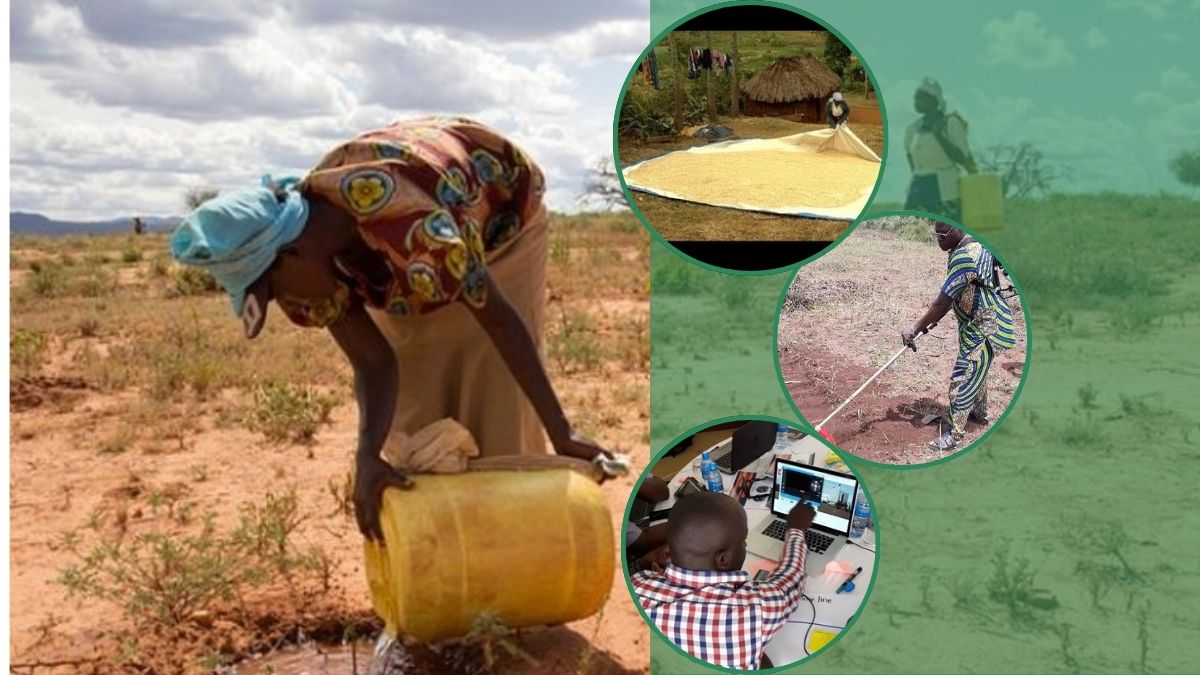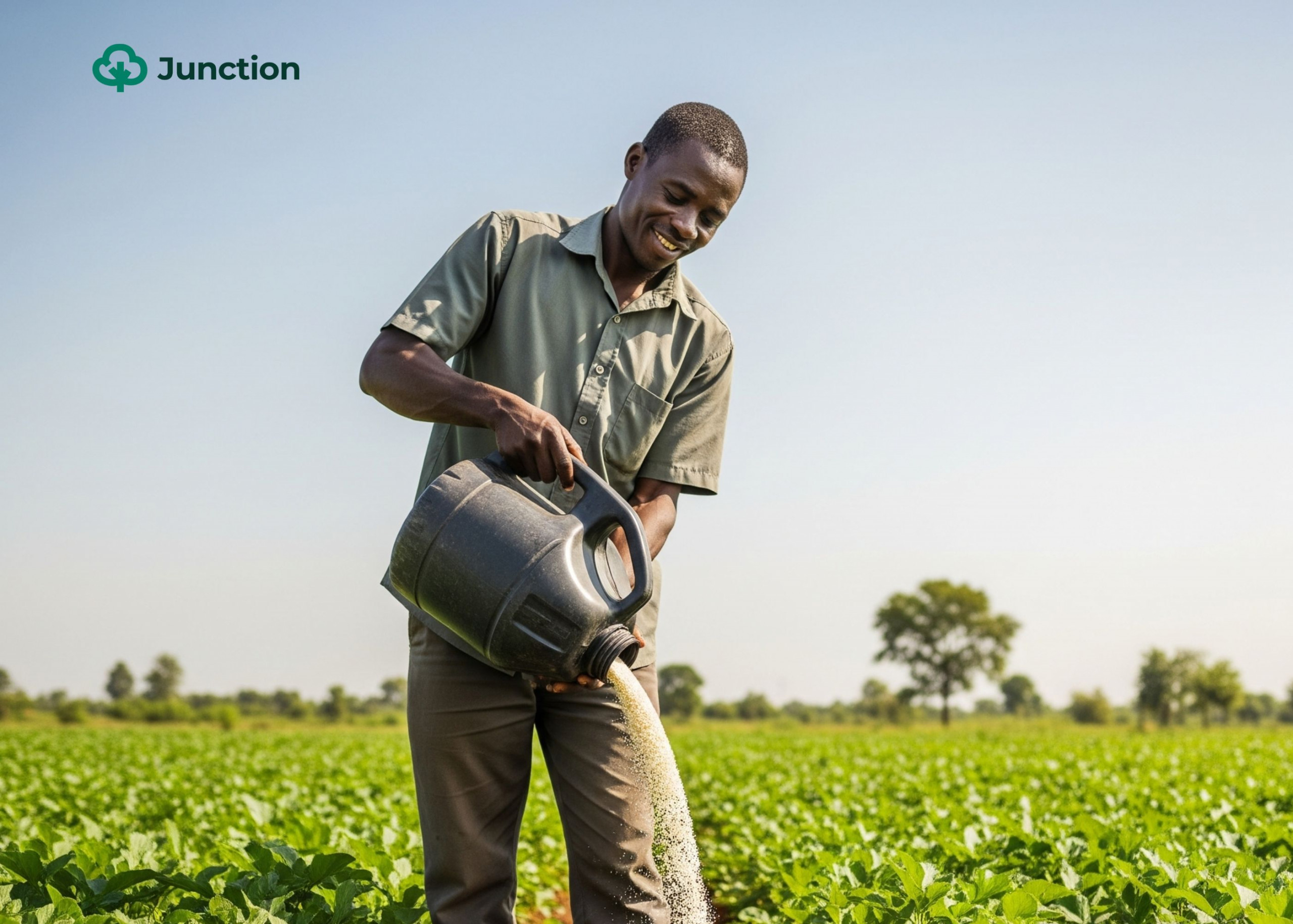What is LDS or August break phenomenon in Nigeria?
In Nigeria, the little dry season (or August break) is a period characterised by no rainfall and it is different from the typical dry season of December to March because it happens right in the middle of the rainy season.
Although this phenomenon happens frequently, many farmers fail to plan for it while some overestimate their ability to predict the weather patterns and run into trouble. However, it is important to note that the fault does not always lie at the feet of the farmers.
Sometimes, farmers who plant cereals like maize, wheat, or sorghum do not get the necessary inputs they need to start their planting on time. These delays may range from late deliveries from suppliers, lack of funds and delay in loan approvals, poorly timed government input supports and so on.
Whatever the case, planting late in April or early May may result in the reproduction stages of crops falling in the little dry season (LDS) period. What happens when this occurs is that the crops do not get enough water to bear rich fruits and is typically the cause of sparse cobs during harvest.
Experts have pegged the best time to plant maize in Nigeria as late March or early April in order to beat the August break or LDS period to harvest for those in the south and mid-May to early June for northern Nigeria. For the latter, their crop will be in the vegetative stage when the dry spell comes and a little augmentation with fertiliser after the period will help crops overcome the stress and bear fruit.
Of course, farmers who have set up proper irrigation systems do not have to worry too much about the LDS phenomenon. Yet, not many farmers have these kinds of systems whether due to poor technical know-how, lack of funds, or any other reason.
So, what is the best way to take advantage of the little dry season (or August break) as a farmer?
Five ways maize farmers can take advantage of the little dry season (August break)
1. Drying harvested maize:
If you planted maize during the early rainy season planting period of late March/early April, the crop should be ready for harvesting just as the rains stop falling by the end of July because the crop typically matures between 70 and 90 days. There are varieties of maize that mature in lesser time (within 60 to 70 days), but they are not usually encouraged for commercial farming due to their lower yield.
Maize drying is a crucial post-harvest process in Nigeria to prevent spoilage and maintain quality. Due to the country’s diverse climatic conditions, different drying methods are employed. However, sun drying is the most common because many producers cannot afford modern drying equipment.

This method is susceptible to rain damage, which makes the little dry season (August break) the best time for it. Missing this window to use the free natural resource will mean investing in other drying methods that will increase the cost of production or plant using the second cycle which after harvest has a longer dry spell for drying.
Sun drying can be done by harvesting the corn and spreading it out on sheets in an open area under the sun. There is also the field drying method where farmers allow maize to dry on the standing stalk, but this requires more time and leaves crops prone to pests.
In the case that sun drying is no longer an option, likely because the rains have returned or threats from pests, you can consider using artificial dryers or kilns.
2. Farm management and planning:
Another opportunity provided by the little dry season is that you can use the period to carry out farm management and planning activities for the second cycle. For the northern part, we have only one cycle. It is the time when you can conduct soil tests to determine nutrient deficiencies and plan for appropriate fertilisation during the next planting season.
Also, you can decide on suitable crop rotations and varieties for the upcoming planting season based on soil conditions, market demand, and climatic forecasts.
If you use equipment like tractors, ploughs, and harvesters, this may be the opportunity to service or repair them to ensure optimal performance during the main planting season. Additionally, you can enhance storage facilities for harvested crops to prevent post-harvest losses. And finally, you have the time to analyze the previous farming season’s income and expenses to develop a budget for the upcoming season.
3. Land preparation and improvement:
As you manage your farm and carry out inspections, you will also need to clear weeds and unwanted vegetation that have sprouted during the rainy season. You can use the weeds to create compost to improve soil fertility for the next planting season. Moreover, this period is a good time to prepare the land for the second cycle in the southern part.
Also, since the rains are expected to return, you can use the LDS period to construct terraces on sloping lands to prevent soil erosion and improve water retention. You can also plant cover crops to prevent erosion, and to improve soil structure and add organic matter.
Use the time to upgrade irrigation systems for efficient water storage and management because the main dry season will commence after a few months.
4. Livestock management:
If you also have a livestock venture, which is typical of Nigerian farmers according to a recent agricultural survey, you should take the opportunity to vaccinate them against prevalent diseases to protect their health.
Also, you can deworm the livestock to prevent parasitic infections during this period. The lean season is characterised by less naturally growing forage for ruminants, you should prepare adequate feed for them during this time.
5. Skill enhancement and knowledge acquisition:
Agriculture is a growing field with new knowledge being added frequently, as a farmer you can use the time to participate in training programs to acquire new farming techniques and knowledge.
This is also the best time to conduct market research to identify other profitable crops and livestock products. You can gain insights into the price difference of maize during the dry season and the rainy season to guide your sales decisions in the future.
To access resources, share knowledge, and improve bargaining power you may have to be a part of cooperatives, associations or unions. You can seize this time to fulfil requirements for memberships.
Conclusion
In 2024, Nigerian farmers were lamenting the challenges that the little dry season came with. Many had to look on in despair as crops in the early stages of their life dried up under the sun with no rainy relief.
This annual phenomenon comes with varying degrees of severity. For maize farmers who planned their crop production well, this period presents a golden opportunity to optimise their production and overall farm management.
By effectively utilising this period for crucial tasks like drying maize, planning for the next season, improving land conditions, managing livestock, and enhancing farming knowledge, farmers can significantly boost their yields and profitability. Embracing these strategies can transform the little dry season from an idle period to a productive phase, ultimately contributing to agricultural growth and food security.
Remember, a well-planned and executed planting season comes with the wet and dry periods. How well you use it can set the stage for a bountiful harvest in the coming years.



